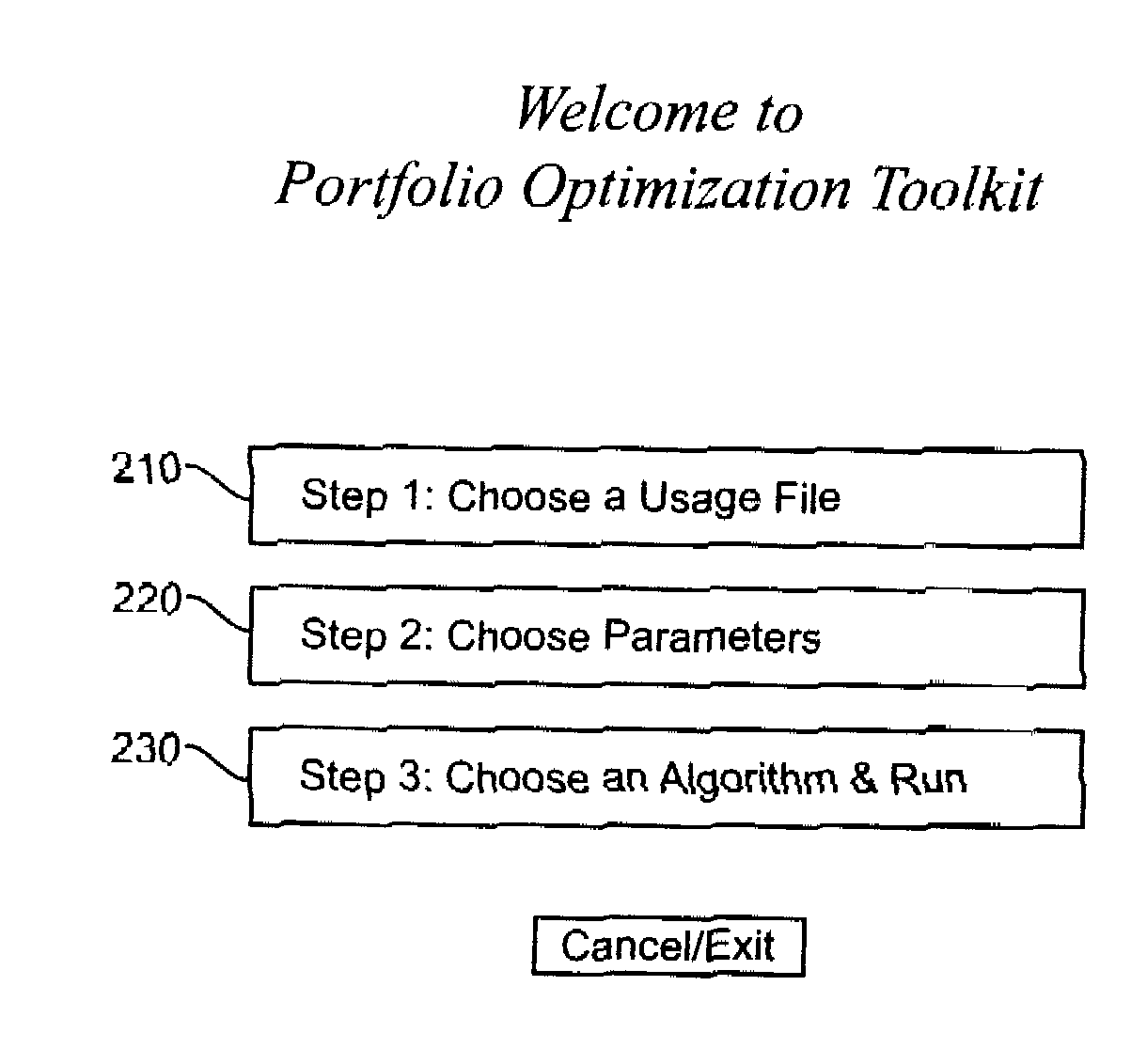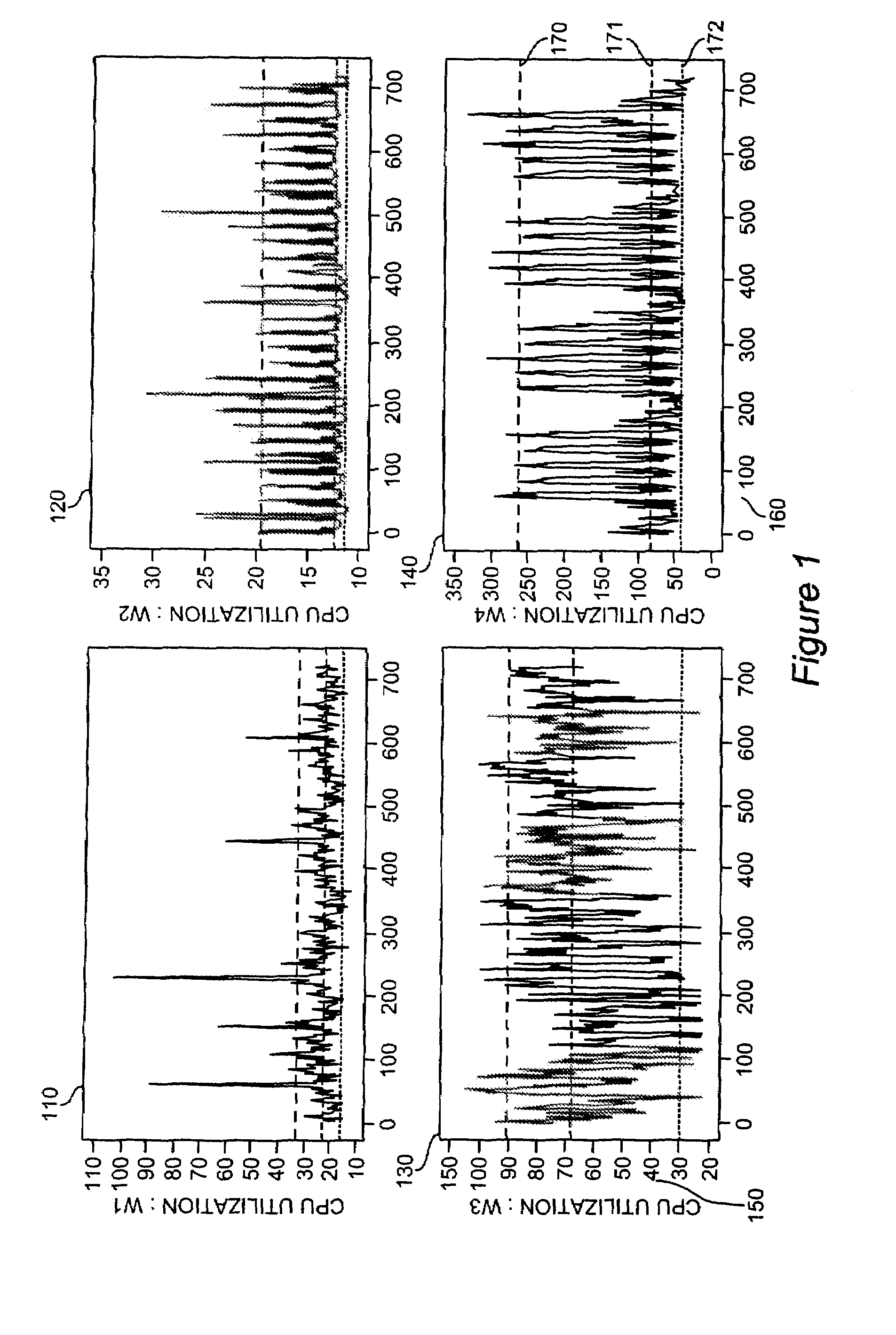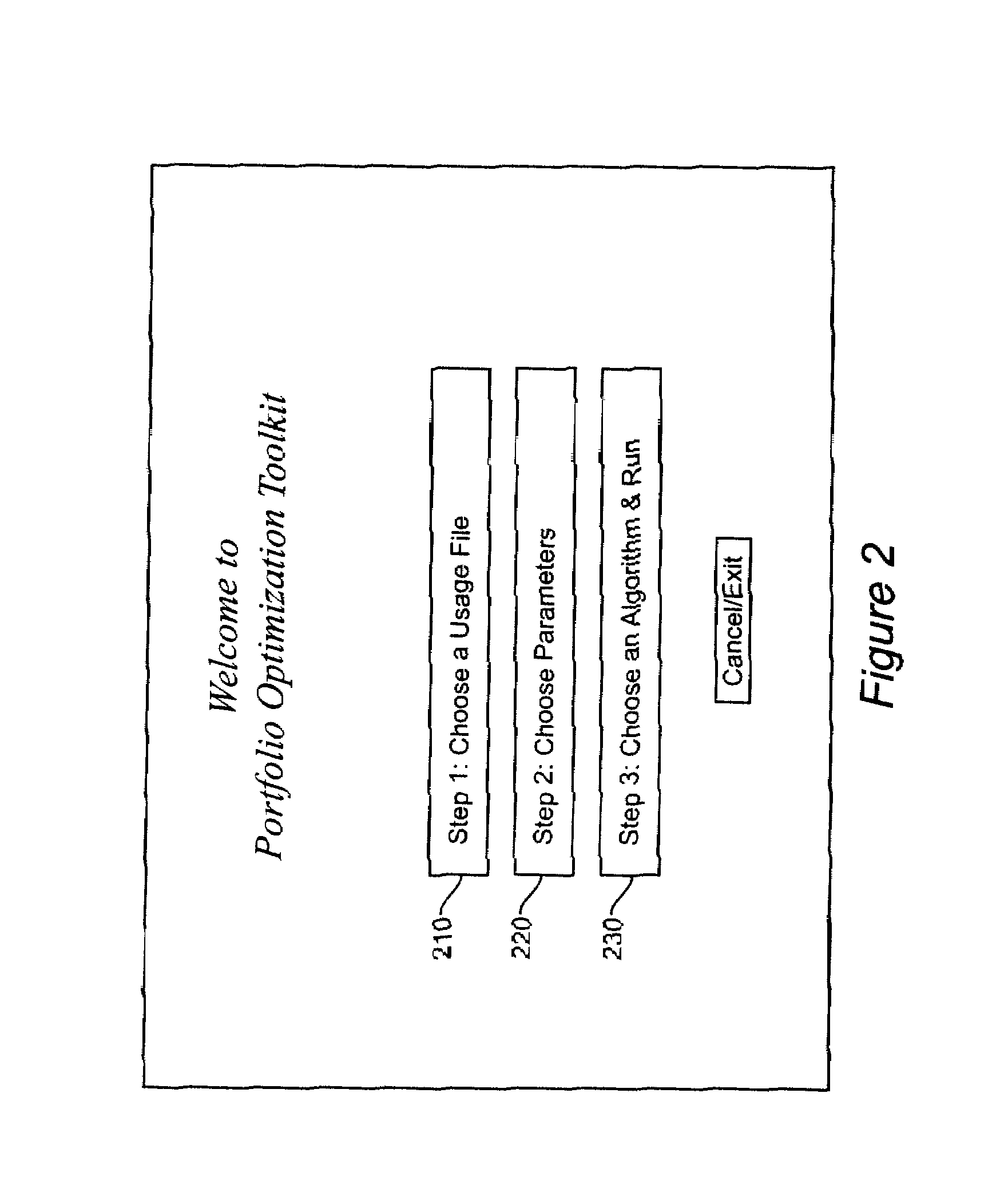Method and apparatus for capacity optimization and planning in an on-demand computing environment
- Summary
- Abstract
- Description
- Claims
- Application Information
AI Technical Summary
Benefits of technology
Problems solved by technology
Method used
Image
Examples
Embodiment Construction
[0031]Operation of the invention will now be described with reference to a set of example workloads, such as the four shown in FIG. 1, W1 (110), W2 (120), W3 (130) and W4 (140). Each of the workloads in FIG. 1 chart CPU utilization (y axis 150) percentage over time (x axis 160; hours) and have dashed lines showing the 10th (170), 50th (171) and 90th (172) percentiles, respectively. Workload could also be measured in terms of main memory, disk storage or other computing resources, but for the purposes of describing the invention it will be sufficient to consider the central processing resource.
[0032]The initial screen for a preferred embodiment of the invention is shown in FIG. 2. In this implementation there are three steps to operation of the invention. The first step 210 is to choose a file for storage of the workloads to be consolidated. Such a file 310 is shown in FIG. 3. The next step 220 is to select parameters as shown in FIG. 4. The last step 230 is to select and run a clust...
PUM
 Login to View More
Login to View More Abstract
Description
Claims
Application Information
 Login to View More
Login to View More - R&D
- Intellectual Property
- Life Sciences
- Materials
- Tech Scout
- Unparalleled Data Quality
- Higher Quality Content
- 60% Fewer Hallucinations
Browse by: Latest US Patents, China's latest patents, Technical Efficacy Thesaurus, Application Domain, Technology Topic, Popular Technical Reports.
© 2025 PatSnap. All rights reserved.Legal|Privacy policy|Modern Slavery Act Transparency Statement|Sitemap|About US| Contact US: help@patsnap.com



